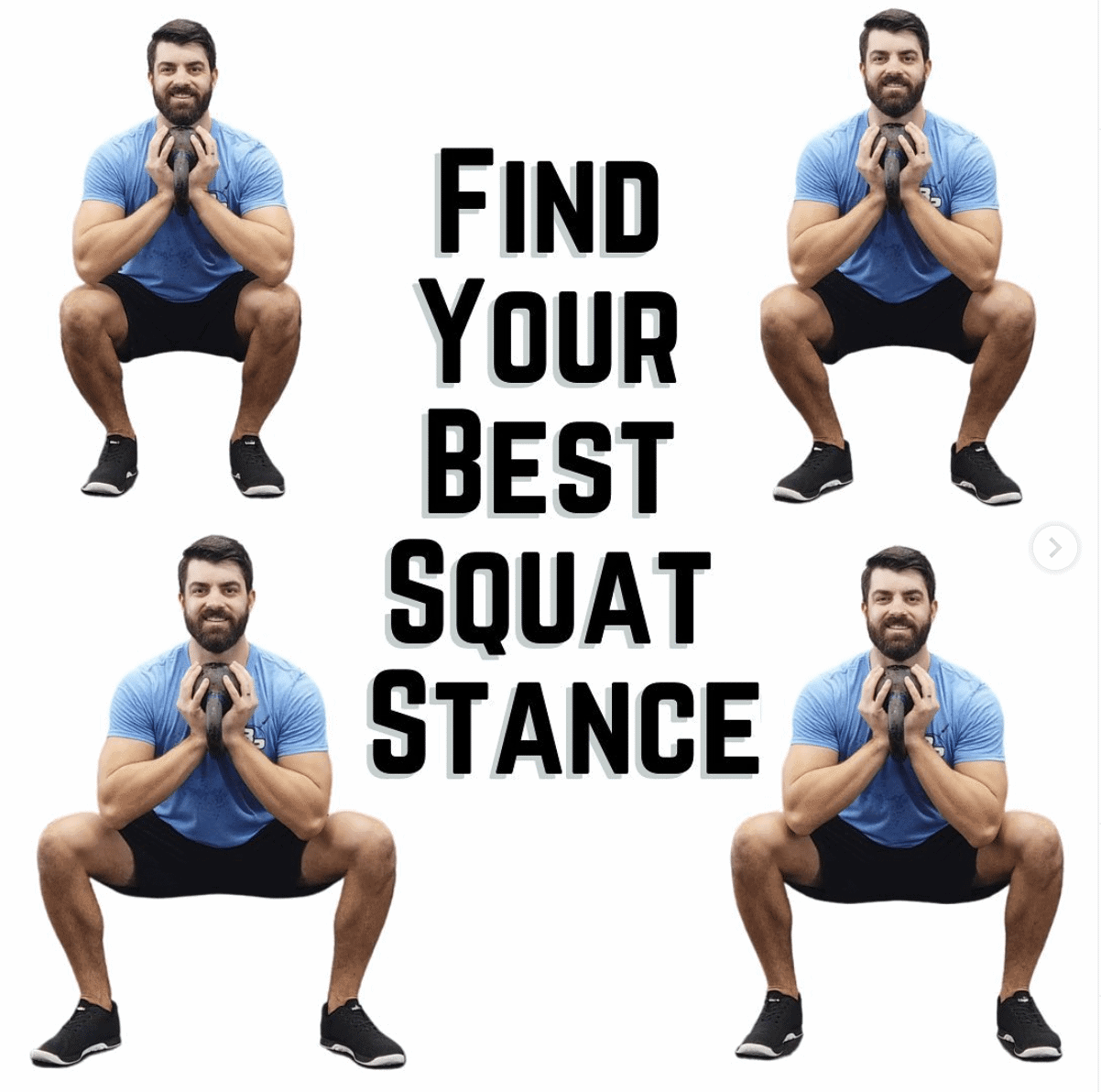If you’re an athlete, chances are you squat on a regular basis. That’s because the squat is one of the most common and important exercises in any routine. We often discuss how strengthening different muscles can help improve your squat performance. But, adjusting your squat stance can be one of the easiest ways to improve your squat performance. When athletes get into their optimal squat stance we can see rapid improvement in squat depth and reductions in pain. In this article, we’ll go over some tips that will help you identify your optimal squat stance!
No two squats look the same because every athlete has unique anatomy resulting in different positioning. Far too often, coaches and trainers prescribe a one-size-fits-all squat set-up. But if you want to take your squat performance to the next level, it’s essential that you find and maintain a stance that is optimal for you.
Here are a few of the factors I use when helping athletes get into their best squat stance.
Finding Your Best Squat Stance
Hip Mobility and Squat Stance
First, we can use the wall test to identify what stance width results in the athlete having maximally available hip flexion. When you find your best positioning with the wall test, we will replicate that positioning by having them squat with the same width stance.
The following video is from our Ultimate Mobility Checklist, a free guide to help you identify the exact areas you need to focus your mobility work for optimal performance. If you want to improve your mobility and performance rapidly, I highly recommend downloading this guide!
Squat Anthropometrics
Up next, I’ll look at anthropometrics or body proportions. For athletes will long femurs (thighs), when they squat their hips will naturally be further behind their feet (see image below). That results in them often having to squat with a more forward torso and having more difficulty squatting to full depth.
So, for athletes with longer thighs relative to their torso (left athlete in slide 3) then I’ll often have them squat wider and with a more toe-out stance. For more tips on improving your squat if you have long legs, read this article.

Ankle Mobility and Squat Technique
Ankle mobility can also impact squat positioning. With poor ankle mobility, it becomes harder to push the knees forward in the squat. For many athletes with tight ankles, a wider stance helps quite a bit (as well as heel lifts). The following video demonstrates how much ankle mobility limitations can impact overhead squat positioning.
If your ankle mobility needs serious help, we have a four-week plan that has helped hundreds of athletes improve their performance. Check out our Ankle Mobility Overhaul to get moving!
View this post on Instagram
Squat Stance and Toe-Out Angle
Finally, play around with different degrees of toe-out in your squat stance. Too many athletes think they have to squat toes forward. But we can drastically improve squat depth and comfort by adjusting this angle.
Typically, I have athletes test different angles varying from 0 degrees of toe-out up to 30 or 40 degrees.

Squat stance is not a one size fits all solution. Each individual must experiment with different setups and find what works best for their anatomy and current mobility limitations. Hopefully, this article helps you better set up for athletic success.
Be sure to check out Performance Plus Programming for 30+ programs to help improve your mobility, strength, conditioning, and gymnastics skills!






